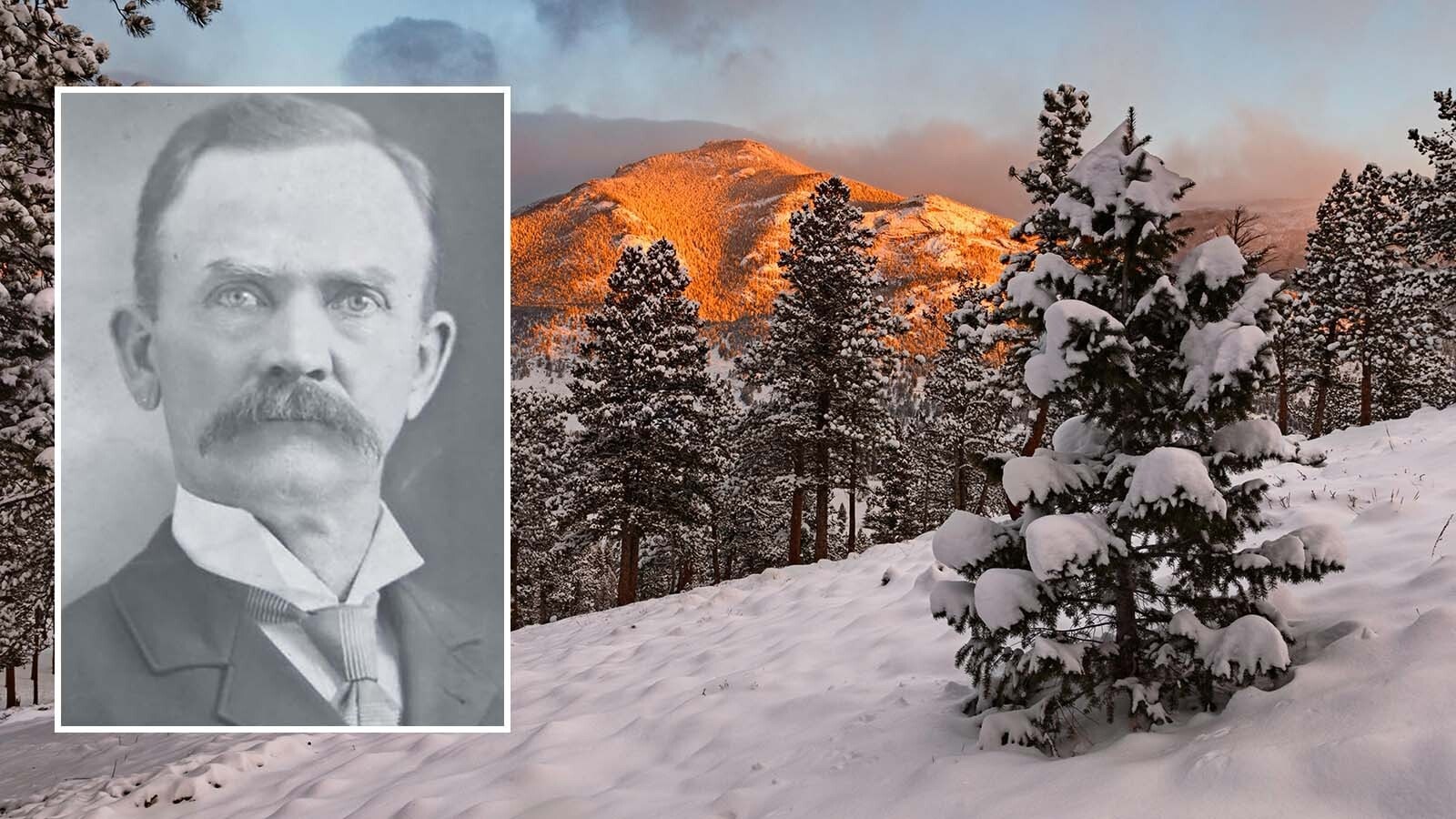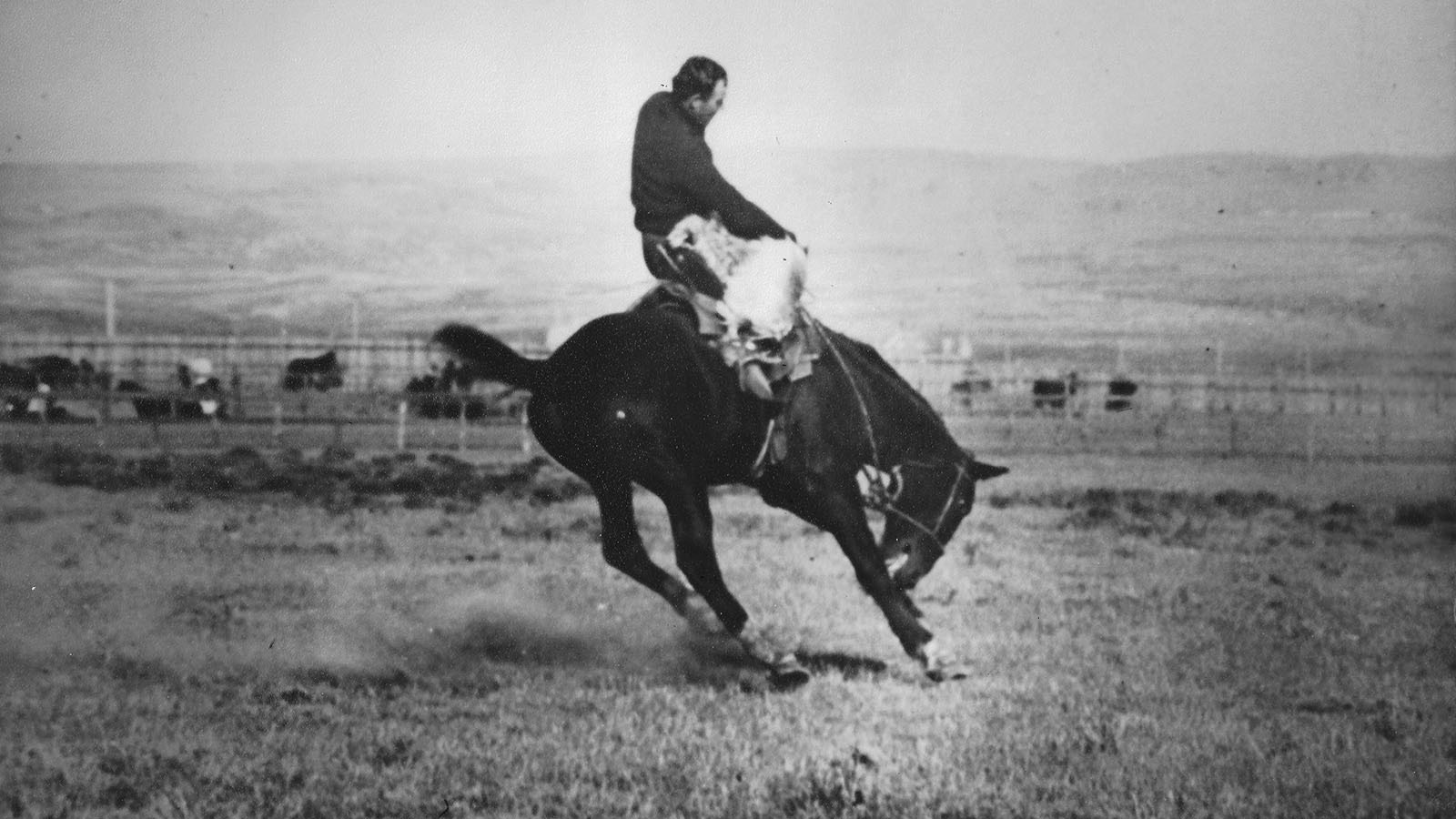Frederick Taft Evans Sr. was born in Ohio, but he headed west after a short stint at college. He worked and roamed across the West for several years, gaining experience and ideas for the place he would finally settle, in South Dakota’s Black Hills.
Born Nov. 11, 1835, in Parkman, Ohio, where he was also raised, Evans took a few classes at nearby Hiram College before his wanderlust led him to travel the country. In 1855 he ventured north and worked in a Wisconsin logging camp for a year.
In the fall of 1856, Evans and two other young men boated down the Mississippi River to Davenport, Iowa, then took a train to Iowa City. They traveled to Council Bluffs on foot.
By the time he got there, Evans was broke and barefoot. Never afraid of hard work, he secured a job chopping wood for $1 per cord.
In the spring of 1858, he bought a yoke of oxen and started his own freighting business. The following year he and seven fellow teamsters set out for Pikes Peak, Colorado. En route the group disbanded, with three of the men going on to California, while Evans and the four others headed north to Walla Walla, Washington.
Leaving the Pacific Northwest in 1859, Evans ranched in Hall County, Nebraska Territory, on the site that would become the town of Grand Island. On April 26, 1863, Hall County Justice of the Peace R.C. Barnard performed a marriage between Evans and local girl Theresa M. Beall.
Although Grand Island was not incorporated until Dec. 10, 1872, the original town plot was filed Sept. 29, 1866, and recorded by County Clerk Fred T. Evans, who remained in that position through December 1867. He was also a representative in the Nebraska Territorial Legislature in 1865.
Freighter
By 1871 Evans had moved to Sioux City and partnered with Frank Peavey in a hardware and agricultural machinery business. Always on the lookout for business opportunities, Evans kicked his entrepreneurial spirit into high gear at age 40 when he opened a large-scale freighting partnership, the Sioux City and Black Hills Transportation Company.
Pioneer Annie Tallent recorded that era in the Black Hills with her definitive 1899 history, “The Black Hills Or Last Hunting Ground of the Dakotahs.”
Evans’ transportation company employed from 1,000 to 1,500 men and wagons, from 2,000 to 3,000 oxen and from 1,000 to 1,500 mules, Tallent wrote.
In late summer 1876, Evans and John Hornick reorganized the freighting firm under the eponymous name Evans & Hornick. Instead of starting off from Sioux City with wagons, they ran a steamboat from Sioux City to Pierre, Dakota Territory, then continued overland with oxen-pulled “bull trains” from Pierre to the Black Hills.
On arrival in Deadwood the supply-laden wagons had to be lowered into the gulch by ropes and chains.
By 1877 Evans had settled in Deadwood.
That was where he learned of the thermal waters at Minnekahta (Lakota for “warm water”) 100 miles to the south. After having a look for himself, he moved there to take a hand in developing that spa town in the “banana belt” of the Black Hills.
At the same time Evans was president of a group that built Sioux City’s first streetcar line, which opened July 1, 1884. Four years later James and Frank Peavey purchased the line.
Hot Springs is Official
Evans Sr., standing 6-foot-4 and barrel-chested, was more than just physically big. The entrepreneur also had big ideas for the development of Hot Springs, Dakota Territory.
According to the minutes of the Fall River County Commission, the name of the town officially changed from Minnekahta to Hot Springs on Jan. 31, 1883.
The locals fought over which town would become the county seat. Oelrichs, some 25 miles to the south, was determined to win that designation, and in September 1888 residents there circulated a petition seeking a vote. Elections were held, but fraud charges were leveled. Even so, Hot Springs won out.
Deciding on the location of the courthouse in Hot Springs caused more friction. The town was less than three-quarters of a mile long at the time, divided between lower town, which housed the common businesses, and upper town, location of the big hotels, spas, and land owned by Evans.
The 1883 original platted townsite was in lower town, and those who wanted the courthouse built there decreed that upper town lay outside the original city limits, making it ineligible.
Evans donated land and won; with a bid of $23,000 to construct the courthouse which is still in use. He hired architect Charles P. Brown, who followed the specifications adopted the county commissioners had adopted.
The courthouse was completed in 1891, but litigation precluded county officers from setting up their offices in the building. The lawsuits led to 24 months of court proceedings, all costing the generous Evans, the city and county untold dollars.
Elegant Hotels
Meanwhile, Evans stayed busy. In 1886 he oversaw construction of a magnificent hotel, the Minnekahta. Contemporaries described the three-story frame building with wide verandas and its own bathhouse as more of a large home than a hotel. It was the first hint of the glamour to come to Hot Springs.
The Minnekahta was a place of relaxation where visitors could stay after whiling away the hours in the warm, healing waters and for some, waiting for their divorces to become final.
The Minnekahta burned to the ground in October 1891. Undaunted, Evans rebuilt on the same spot. On Aug. 5, 1892, Evans opened his new sandstone Minnekahta Hotel, soon changing the name to the Evans Hotel.
Located across the street from the Union Depot, when trains arrived bearing guests, the staff unfurled a red carpet from the hotel to the station. Considered the finest lodging between Chicago and Denver, it drew socialites as well as business visitors and conventioneers.
Community Minded
In 1889 Evans purchased an entire weekly newspaper outfit from the Sioux City branch of the Western Newspaper Union, a supplier of printing supplies—machinery, plates, printed sheets, paper— and had it shipped to Hot Springs. He called the newspaper the Minnekahta Daily Herald but within months sold it to concentrate on larger projects.
A man of many firsts for Hot Springs, in 1890 Evans helped establish the city’s power plant and lighting system and orchestrated construction of the water system. On many of the big civic projects Evans personally matched city funds dollar for dollar.
He was president of Minnekahta State Bank in 1892 and even served a term as mayor. He provided sole support for the city band and baseball team and donated land to accommodate the construction of every church built during his years in Hot Springs.
Evans also pressed the big railway companies to accommodate Hot Springs. The Fremont, Elkhorn & Missouri Valley Railroad, commonly known as the Elkhorn, had serviced Buffalo Gap, just 14 miles away, since 1885.
On September 16, 1890, the Elkhorn reached Hot Springs. On Evans’ prompting, the company had extended the line and built a spur to his sandstone quarry along the way.
Evans encouraged the Burlington & Missouri River Railroad to build into Hot Springs from the west, and its first train arrived on July 5, 1891. Two railroads, warm and inviting water, sandstone quarries, and an influx of skilled stonecutters soon transformed Hot Springs into a tourist mecca.
The two railway companies cooperated in building the nation’s smallest Union Depot, made of locally quarried sandstone.
Evans Plunge
Evans capitalized further on the warm waters when he developed the Evans Plunge, marking its grand opening on May 22, 1891, by inviting everyone for a free swim. The 70-by-200-foot pool was built atop several warm water springs that bubbled up through its graveled bottom, as it still does 134 years later.
By the turn of the century Evans’ health was in decline, and on Oct. 11, 1902, he died in Hot Springs. His legacy lives on in town with Evans Heights, Evanston Street, the Evans Plunge, and the Evans Hotel, which now serves as low-income housing for seniors and is simply called The Evans.
A captivating Victorian home he built for his family in 1892 on a hill overlooking the Evans Plunge has been renovated several times.
Some three-dozen Richardson Romanesque buildings made of sandstone from area quarries remain in use in Hot Springs, a testament to the long-ago patrons who made the valley into a world-renowned spa resort, and remains so to this day.
Peggy Sanders can be reached at peggysanders.com





